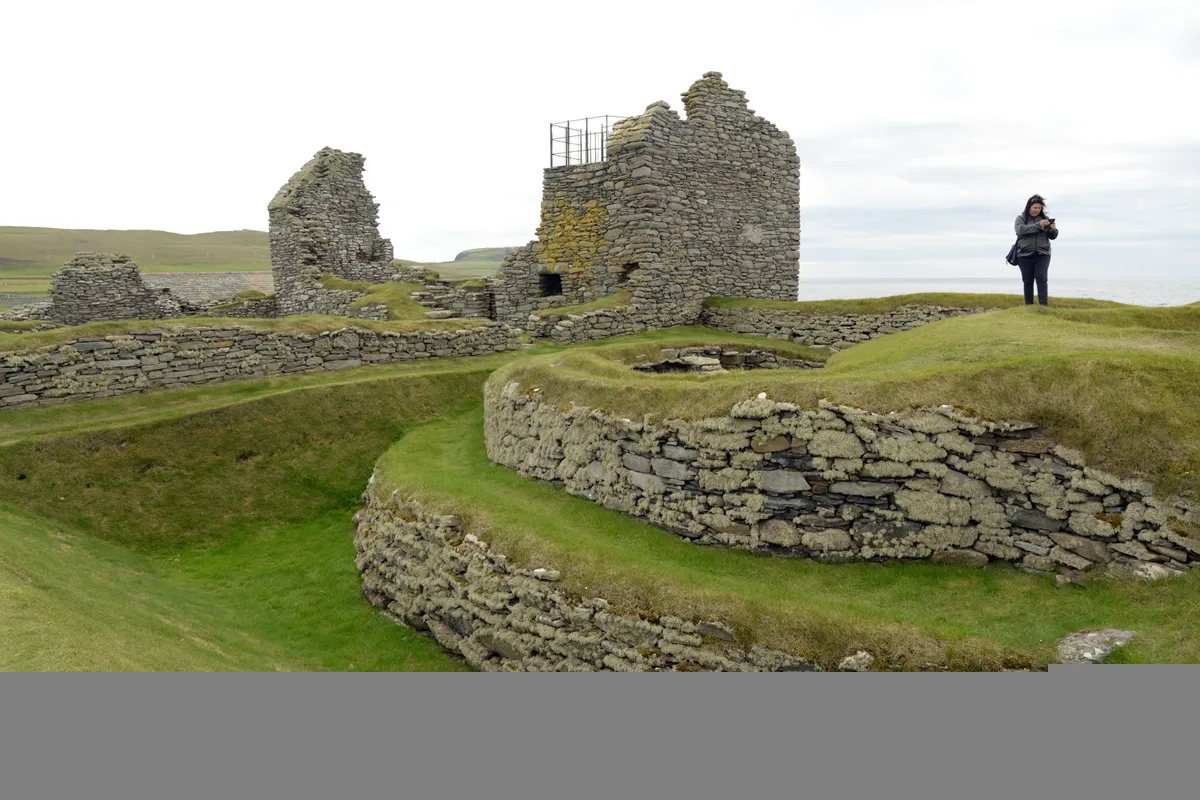
A couple of years ago I was visiting the cold, windswept islands of Orkney and Shetland in the Atlantic Ocean. Both places have close ties to Scandinavia, because of Viking settlements during several hundred of years. The islands are also unique because of the many archeological sites to testify that there has been settlements dating back to the Stone Age. I only had a three day visit on the Shetland, so my travel companion and I had to make choices when it came to which sites we should visit. On Shetland, our choice was Jarlshof. The history of Jarlshof is the history of habitation that almost uninterupted dates back more than 4000 years. The site shows the remains of the different settlements from around 2500 B.C to 1600 AD. This fact makes Jarlshof one of the most important prehistoric sites in Shetland. Jarlshof is located by the sea, which means wind and erosion has destroyed parts of the site, but there are enough remains left to give you an idea of how people lived during these centuries.

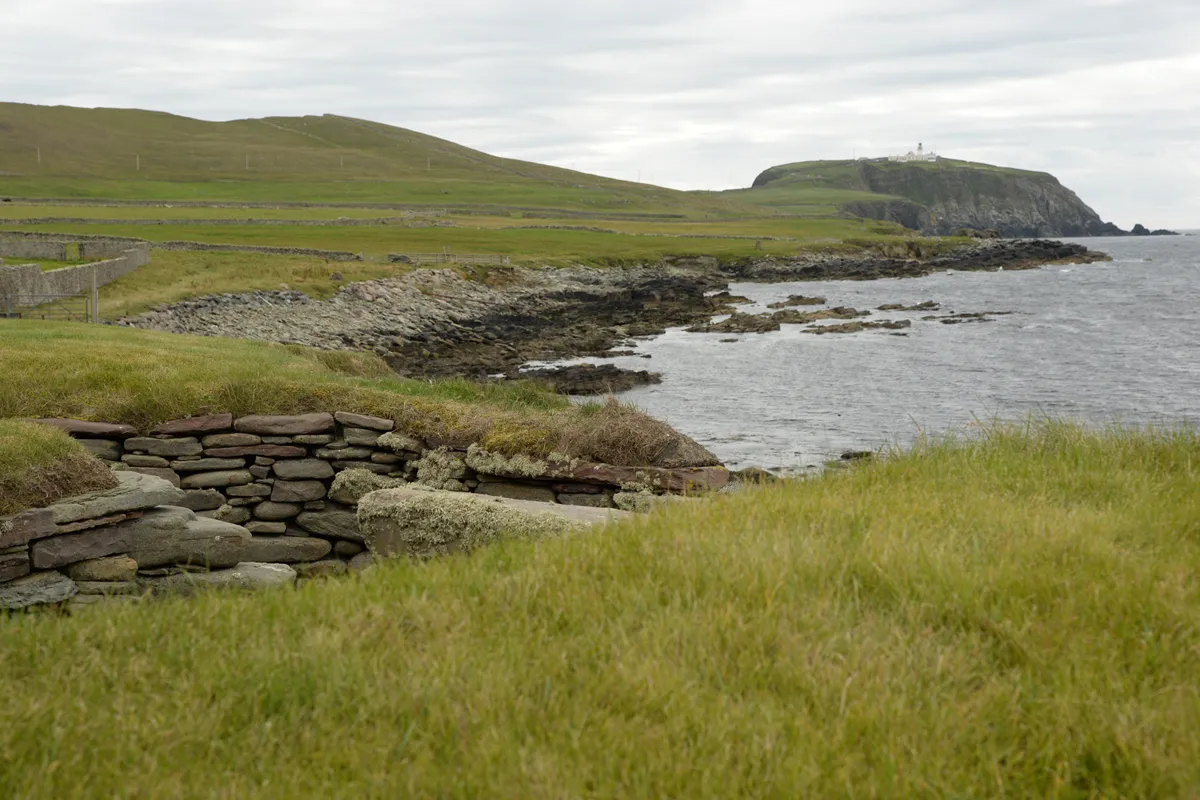
For years this place was covered in sand, blown in from the sea. When the buildings were rediscovered in the 1890s it was a storm that revealed some structures and excavations began. These revealed layers of settlements proving the place has had habitation that goes back to Neolitic times. But also habitations from the Bronze Age, Iron Age, Norse settlements and a medieval farm. The notorious, tyrannical Lord of Shetland – «Black Patie» has also been associated with Jarlshof. The habitation at Jarlshof has been going on all this time since the Stone Age. New settlements replaced the previous one and were constructed on top of the previous. This lasted almost without interruption until the 1600s. When the last settlement was abandoned, the wind blew sand over the site, covering the remains of the houses. When I was walking around the site, I could easily to imagine how fast it was covered in sand. The wind is strong.


To get to Jarlshof, we took the local bus from the capital Lerwik. It took an hour to get here. There is a hotel right by the car park. In addition a small visitor center. That's where we bought tickets and received a headset and tape player that became our guide on the tour around te site. Before we started the tour, we took the time to study maps and information signs both inside the visitor center and the map outside. The nice thing is that the signs are numbered. That's where we should stop and start the tape. The drawings on the boards show what the houses may have looked like. That helped a lot to understand what they might have looked like. So let the tour begin. We started in chronological order by starting at the oldest part which on the map has no.1
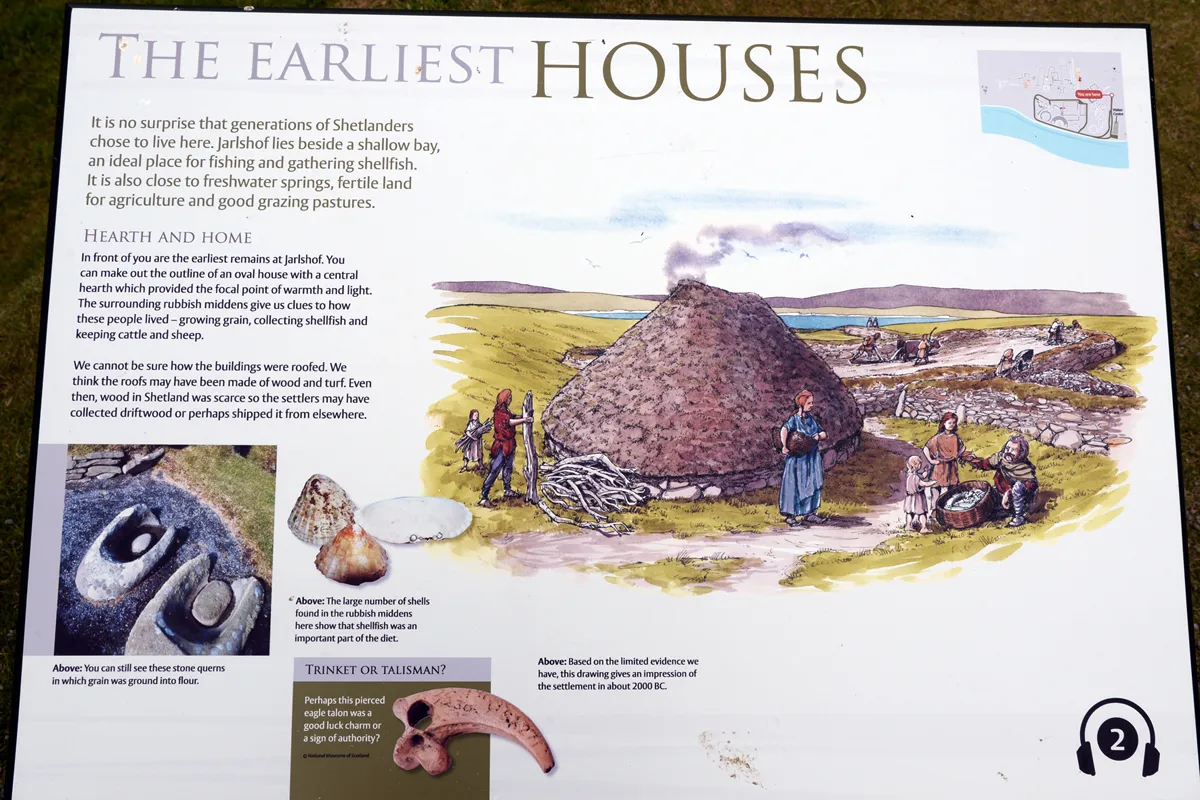
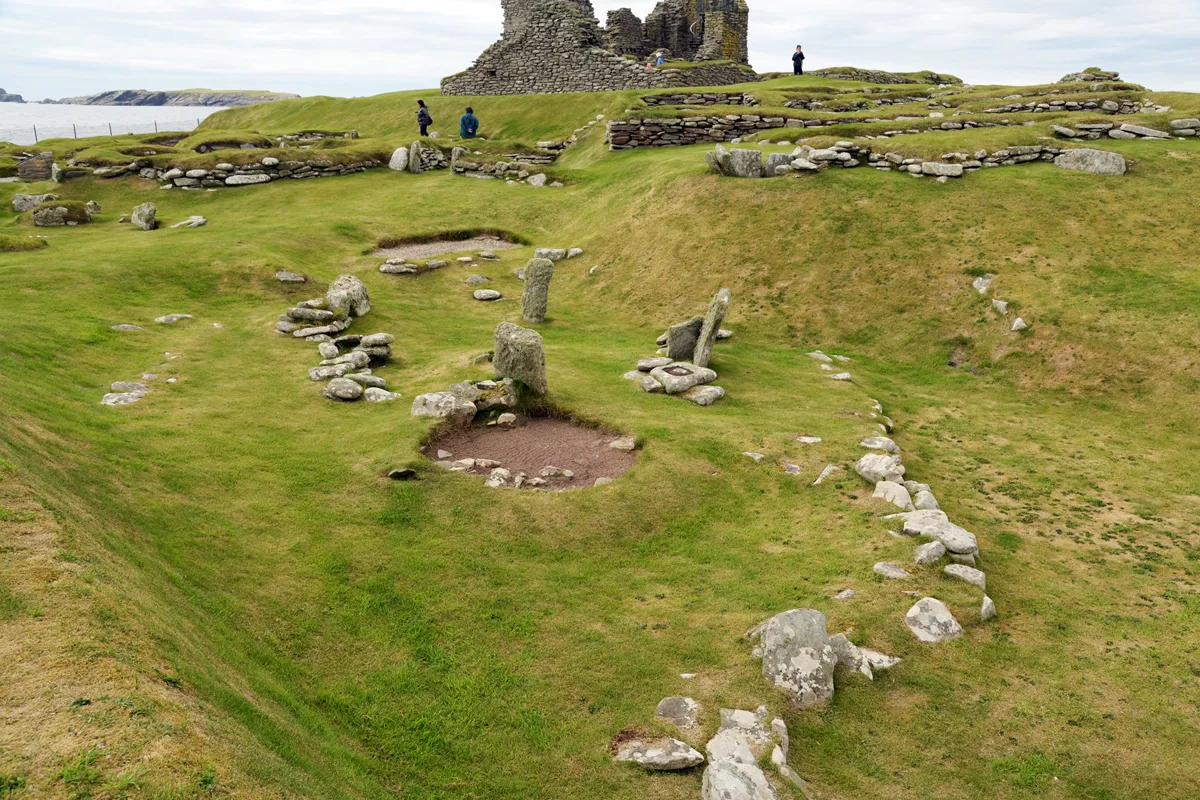

1: Stone Age dwellings
The earliest evidence of settlements are these remains of Neolitic dwellings that dates back to around 2500 B.C. ( for comparising, the Great pyramid in Egypt was built in 2600 B.C.). There is’nt too much left, but the drawing gives an idea of what the oval house might have looked like. It's possible to actually see the outline of the house with the central hearth.

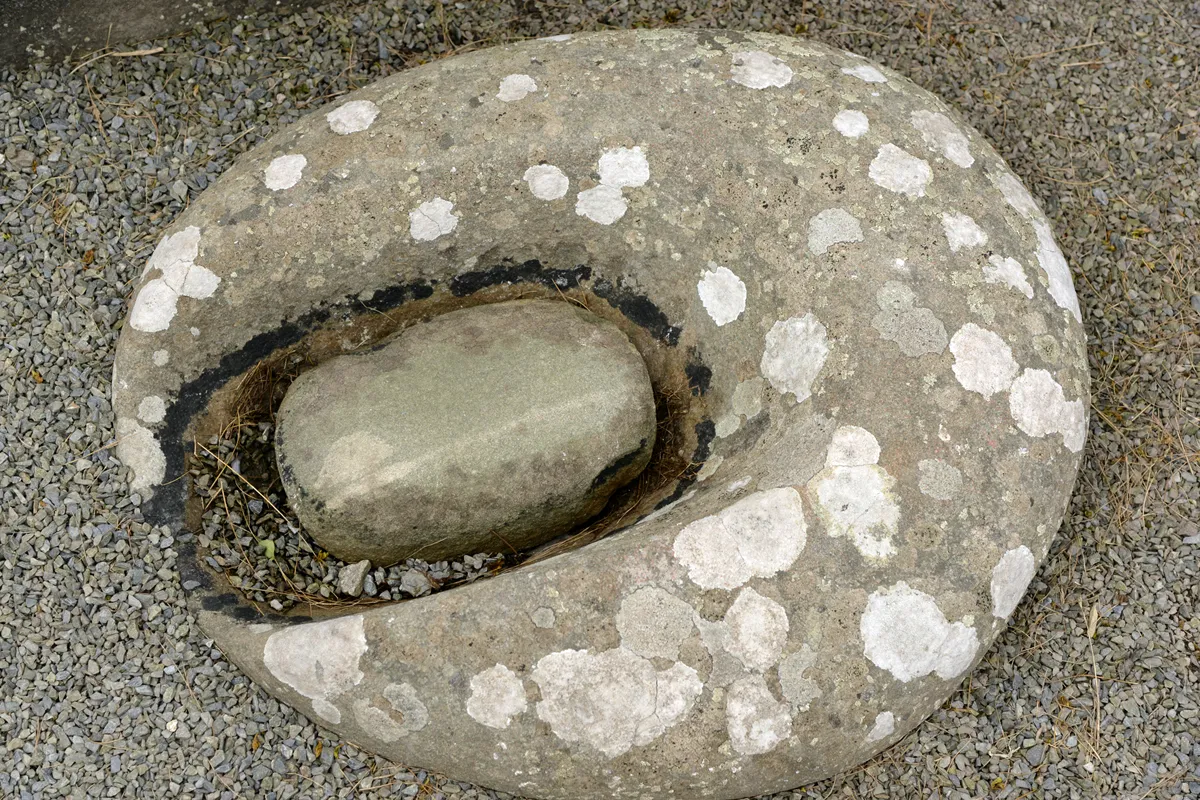
2: The Bronze age settlement
This house has also had a smithy, where the bronze – smith, would have produced his tools. Many of the items found here, are similar to what has been found in Ireland. That's why it's believed that the inhabitants of Jarlshof might have had contact with settlements in Ireland. It is believed that the smithy dates back to around 800 B.C. It's the smithy that's in the foreground of the photo

3: The Iron age settlement
Part of this settlement overlies the Bronze Age settlement, so the people who used to live here, must have left. With the Iron Age new technologies were introduced. Iron was a stronger metal, so tools and weapons were much stronger. These people also introduced weaving. Maybe that was the start of the textile industry?


The building style of the houses during the Iron Age, changes in a way that gives more space inside. The photo above shows the largest of these dwellings with cells radiating away from the central hearth. There is also a kind of quite large box containing animal bones and stuff I can't see what is...



4: The Broch and it’s courtyard
Half of the Broch (a tower like building) is missing. It has probably been taken by the sea, leaving a cross section of the Broch tower that must have been at least three storys high. When looking at the drawing of what it looked like, we did actually did manage to see what was remains of the outer and the inner walls.

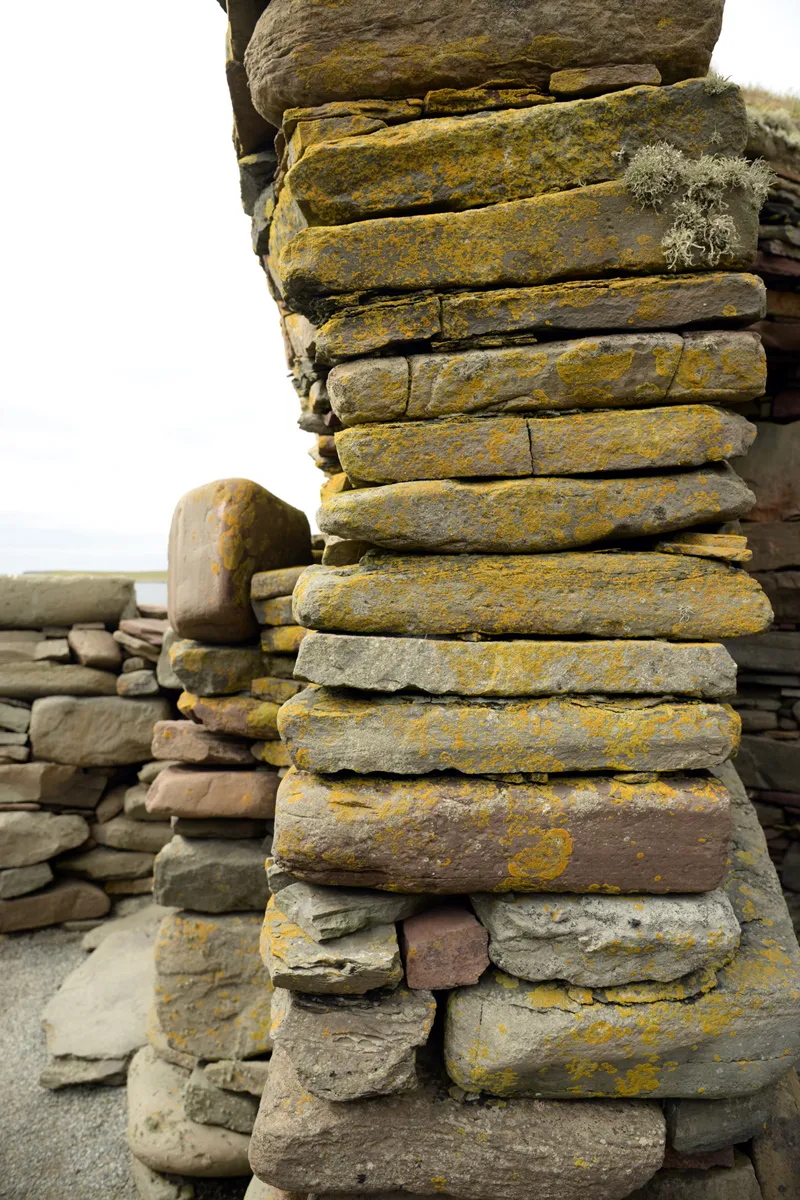

The new settlers who built the Broch arrived between 100 B.C and 100 A.D. They created this massive tower of stone. At the end of the Iron Age, there was a change in climate. Control of goods became more important and the result was enclosed settlements that could have been built as defence as well. What we can see today has a hight of 2,5 meters, but it might have been as tall as 13 meter. The Broch has a courtyard with a stone wall around. But some of it is beneath part of the Laird's house.


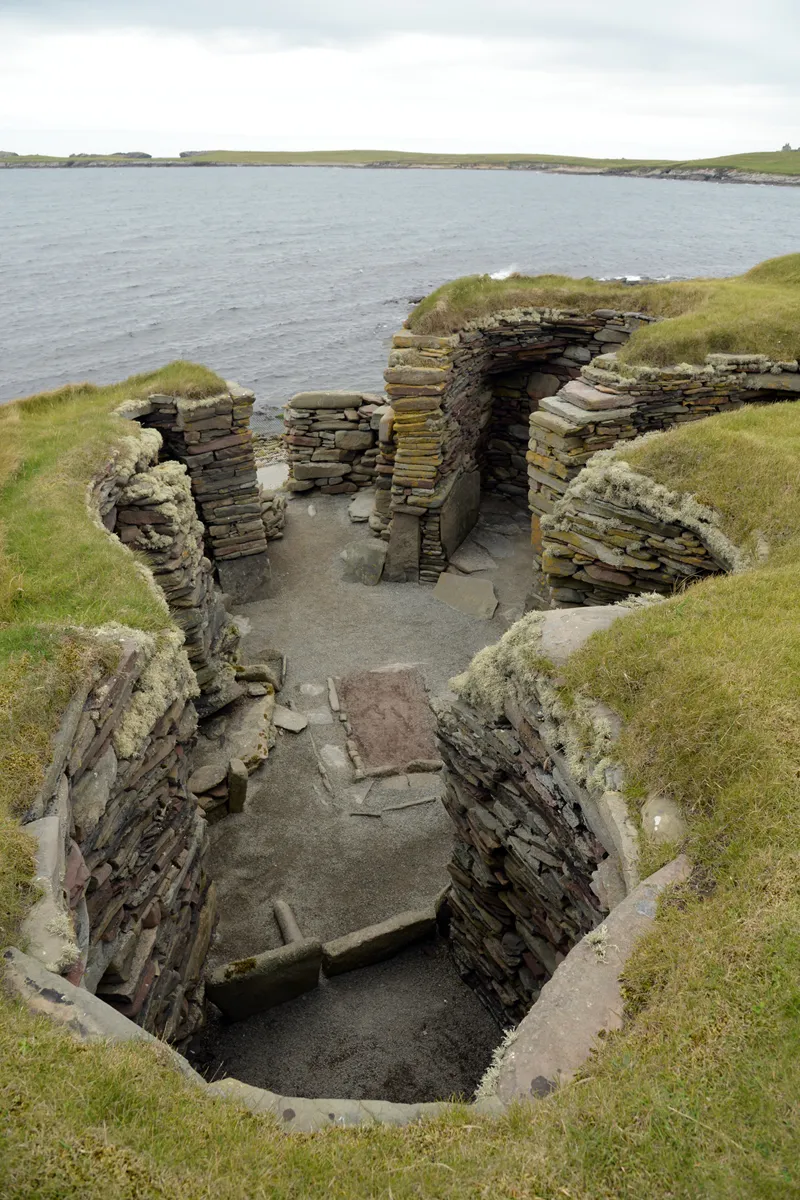

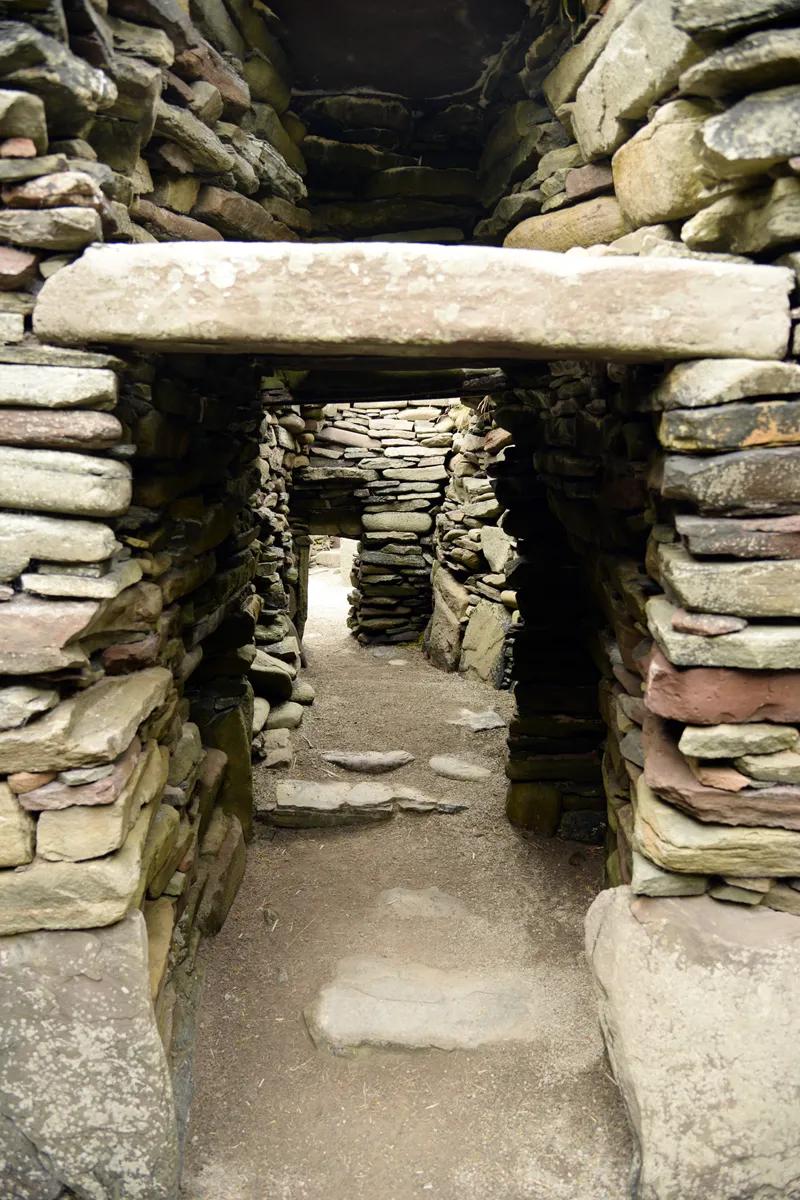
5: The wheelhouses
It is posible to still see parts of 4 of the wheelhouse. This type of house was introduced in the 2nd and 3rd centuries AD.Two of them are built within the remains of the Broch and it’s courtyard, making it a bit difficult to sort out the buildings from one another. These houses I found the most interesting.'
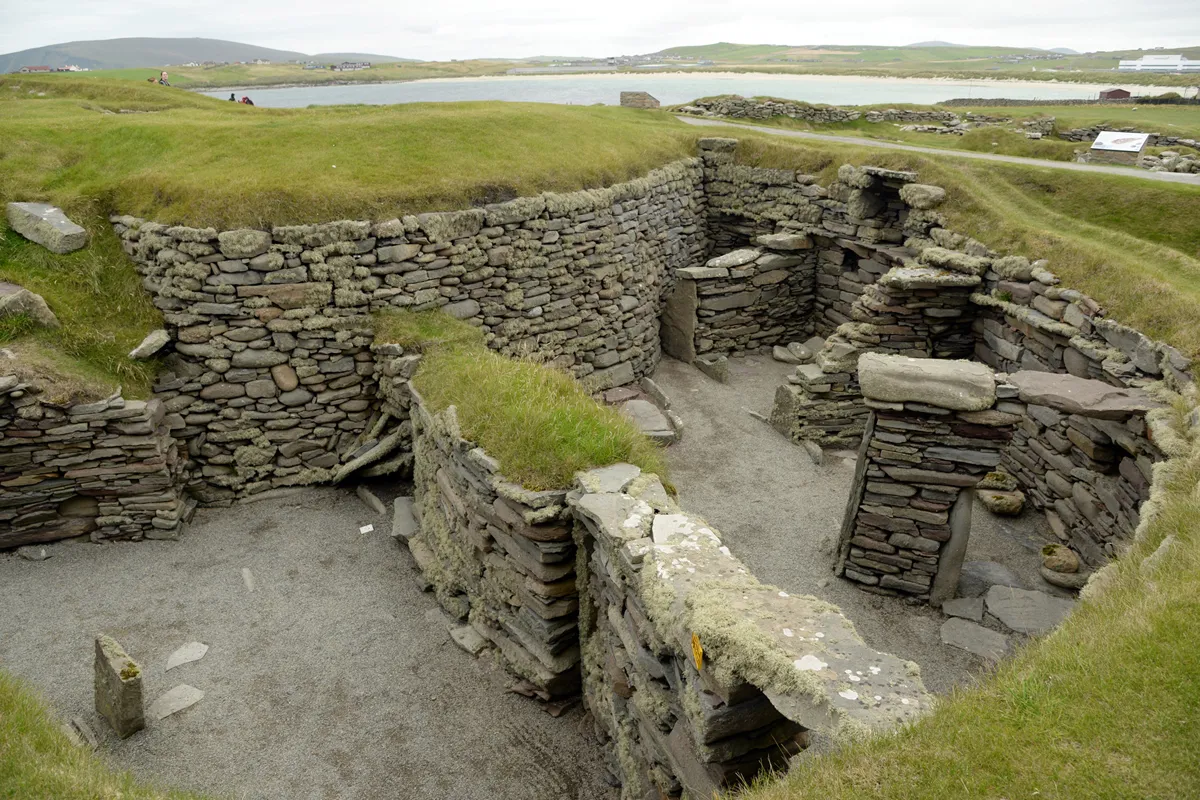

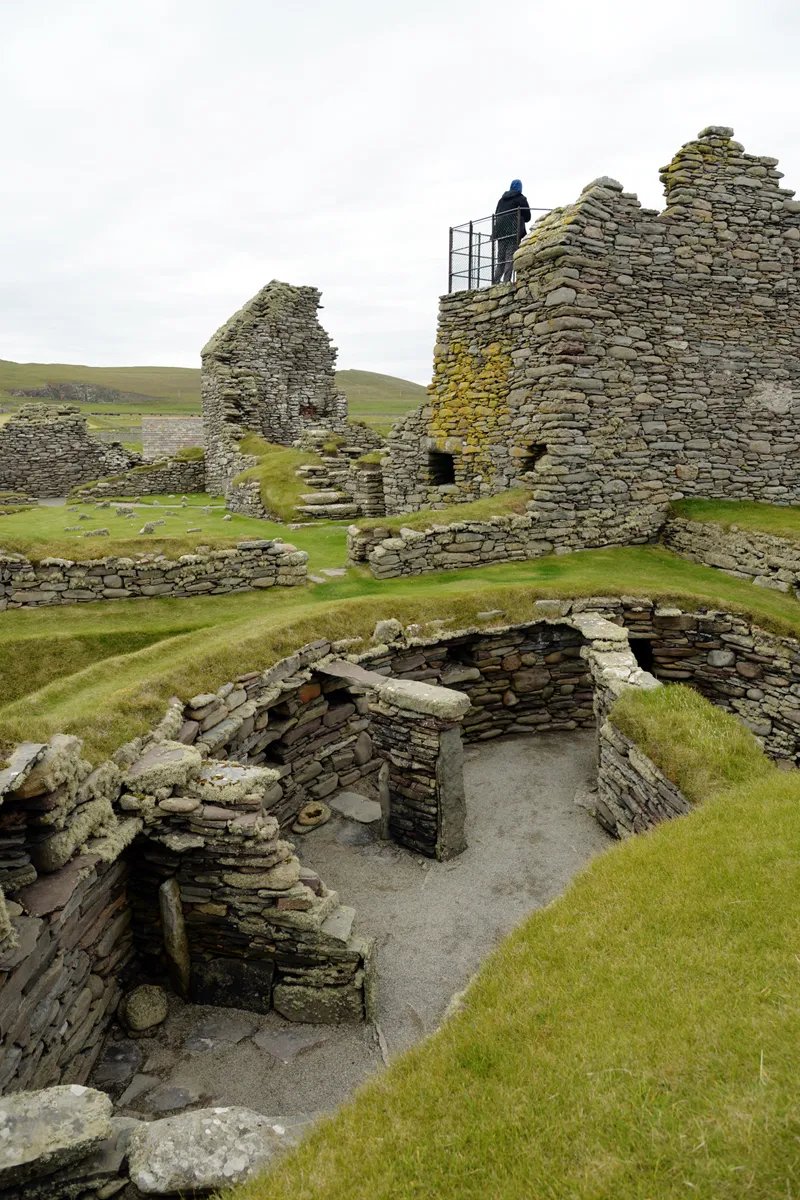

Especially one of them is well preserved. Because Jarlshof is situated close to the sea, you can hear the sound of the waves. It it's windy, like the day we were here, you can hear the wind too. But as soon as we entered a wheelhouse, it became completely quiet! It was impossible to hear anything!
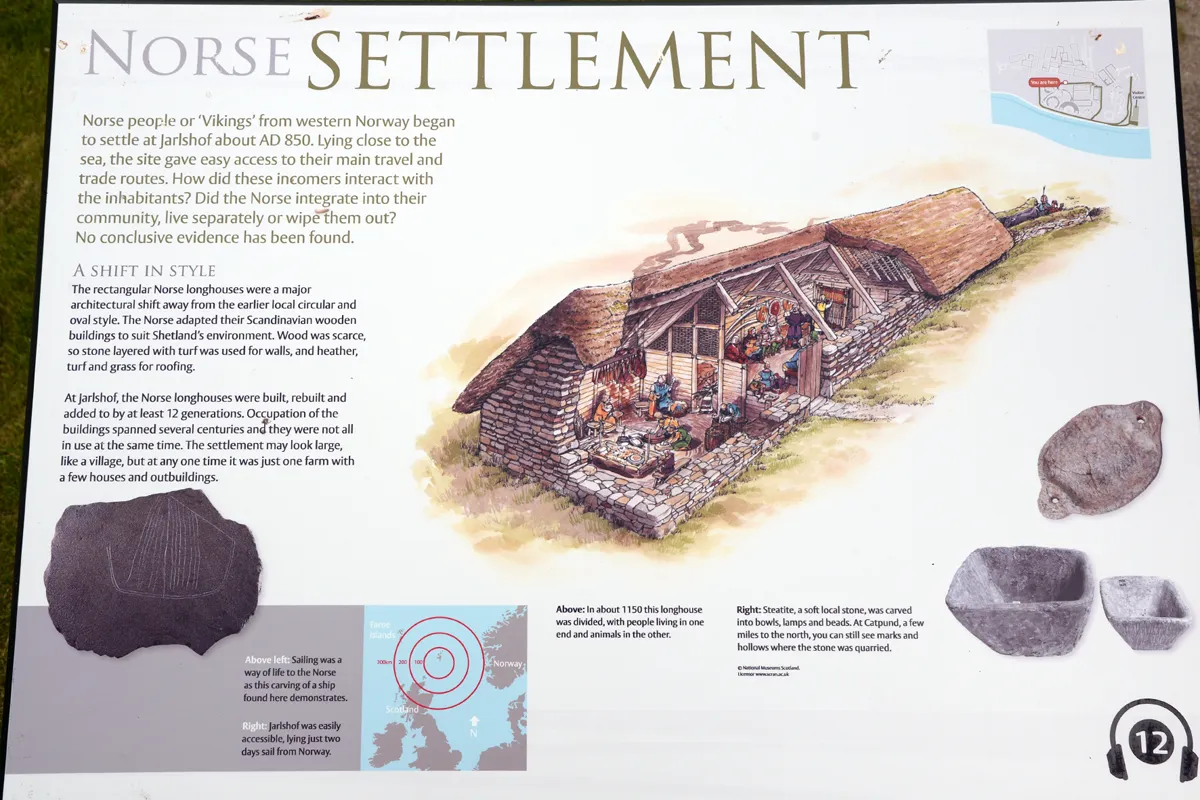


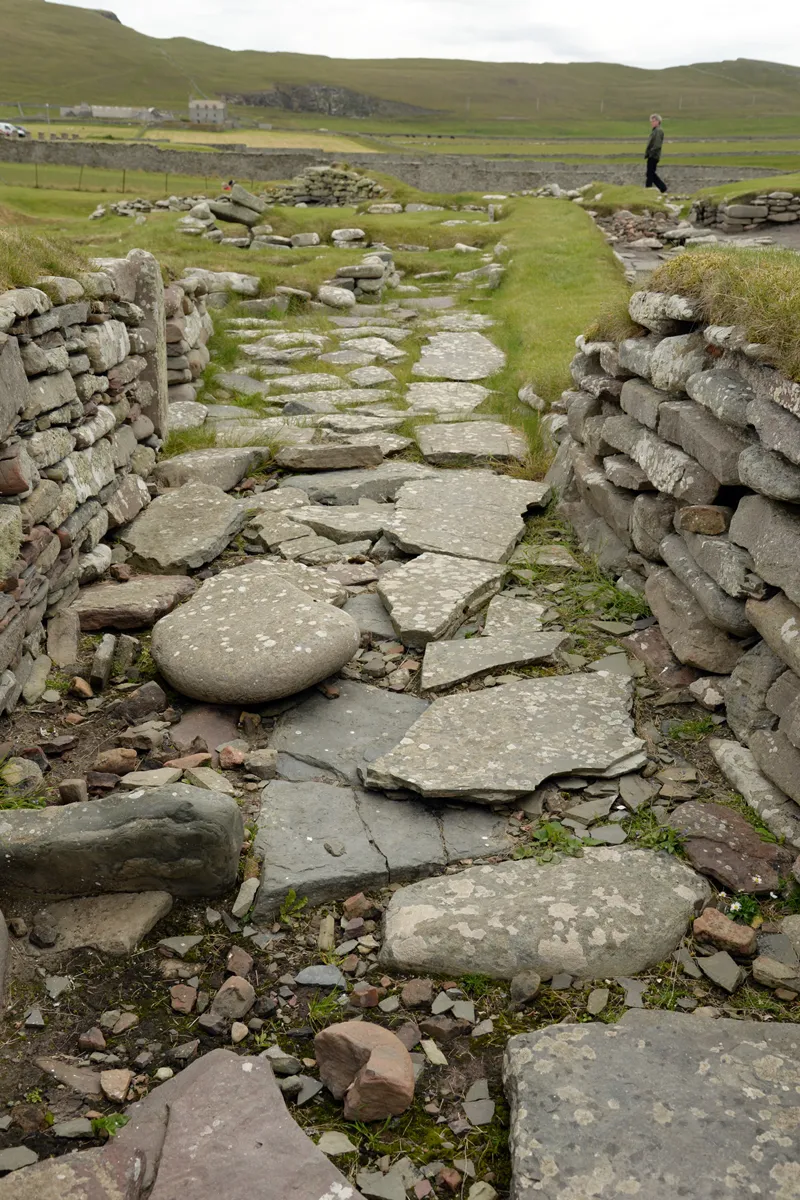
6: The Norse settlement
What we can see es only the foundations as evidence of the Norse settlements. The first houses were established by farmers around 800s that was the time of the first raids done by the Vikings on these coasts. But this settlement kept developing for the next 400 years. Excavations shows that the houses in the Norse village dates back to between 9th centrury and 13th centuries. The layout of the longhouse is what we see here. The settlement grew and developed to include buildings for different use during these centuries.
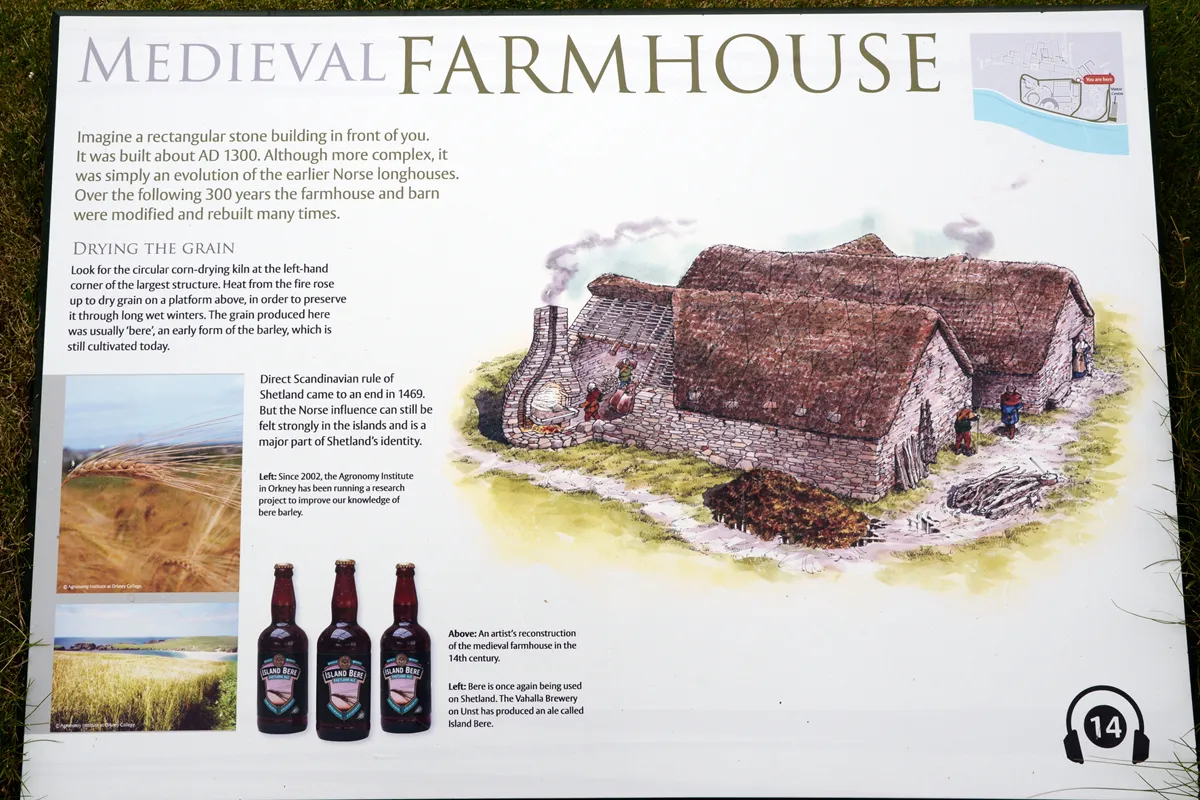
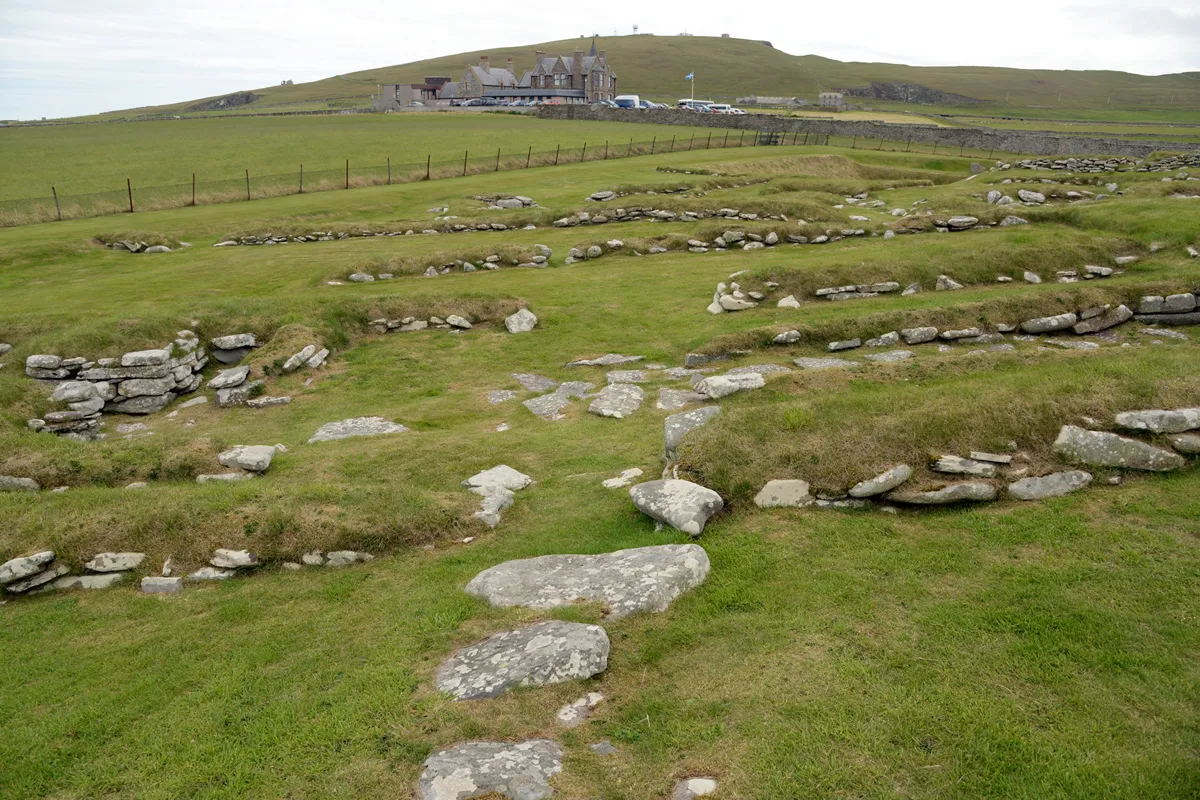
7: The medieval farm
The farm was established in the 1200s and consisted of both a farmhouse and a barn. At this time Shetland was still ruled by Norse earls and under Norwegian rule. The style of the buildings were therefor the same style as in Norway. Because the area around Jarlshof belonged to the church of Bergen (Norway) it is assumed that the inhabitants here had contact with their ancestral land.


8: The new hall and laird’s house
The last house built at Jarlshof before it was totally abandoned, was the Laird's house, built in 1580s by Earl Robert Steward, the new lord of Shetland. The style of this house is the same style used by people in mainland Scotland. Shetland and Orkney came under Scottish control in 1469. Sir Robert Stewart became Earl of Orkney and Lord of Shetland in 1581. He was in control of Jarlshof.
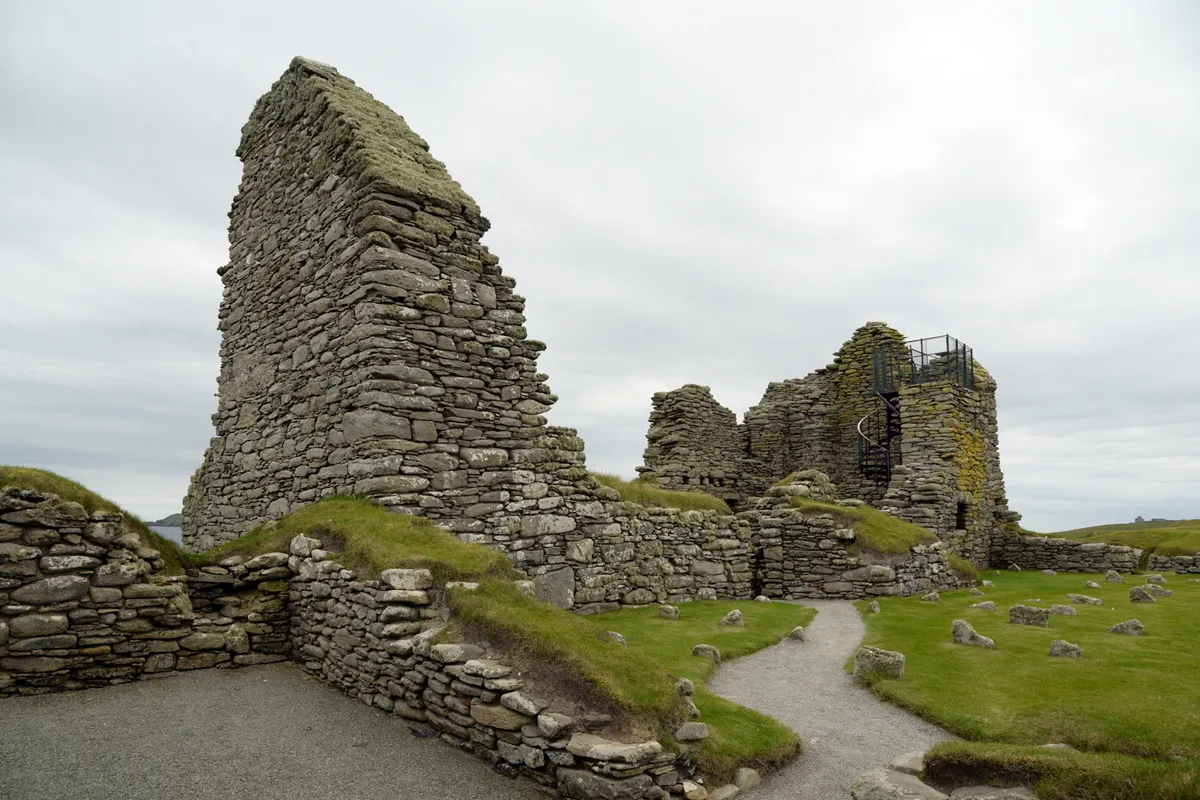


The house consists of two structures and a courtyard. Also a barn and a graveyard that's placed next to what is left of one of the structures. It is said that it's shipwreced sailors who are burried here. But I don't know if that is so. We could actually get to the second floor and from here look get a view of the whole of Jarlshof.
This is end of tour around this unique historical place. We lost of bus when we had finished our tour. But the hotel at the car park had a restaurant. A good place to have a late lunch.
Please do follow if you want to keep up with my next travel story. Any upvotes or reblogs are hugely appreciated!
Latest travel stories, check out :
Hungary – Contrasts in Budapest
U.J
Kristiansand, Norway
All the photoes are mine, Ulla Jensen (flickr, Instagram and facebook)
[//]:# (!pinmapple 60.153543 lat -1.148795 long Scotland - A historical journey over 4000 years in one place d3scr)
Read about us? // Main page!
Latest content: Travel, Art, Article, Poetry








































